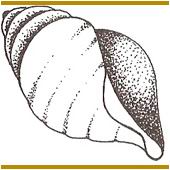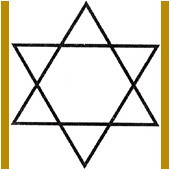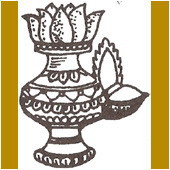
S
Sadhu
One who renounces the secular world to follow a religious life.
Sala
An open-sided pavilion usually found in the compound of a Buddhist monastery
as a Place of rest.
Sampot
A garment covering the lower part of the body, usually worn by male deities
in Khmer art.
Samsara
The transmigration of the soul through the endless cycle of birht, aging, death
and rebirht Accompanied by suffering. Buddhists and Hindus try to find release
form this cycle of reincarnation by striving to eliminate craving and desire.
Sangha
The community of monks following the precepts of Buddhism. Part of the Triple
Gem, along with the Buddha and the Dharma.
Sankha
In Vedic times this used to be a trumpet to announce the start of battle. In Buddhism it is used to announce the glory of the holy name. The Tibetan conch shell has a metal mouthpiece.

Sanskrit
"Pure." An ancient language of India, of Indo-European derivation, used in the
sacred texts of Hinduism and Buddhism.
Shakti
The female consort of a Hindu god who personifies the god"s divine energy or
life force. For example, Parvait is the shakit of Shiva.
Siam
The historical name of Thailand until 1939.
Siddhartha
"Goal reached." The given name of the prince who later became the historical
Buddha.
Simha
Lion, usually depicted in mythical form in art.
Six pointed star
The six-pointed star in Buddhism has the same significance as in Hinduism: it represents the union of the female and male principles. Among the Buddhists it is also used in preparing an astrological chart.

Stucco
A type of plaster used in architectural decoration, sculpture, and as mortar
between bricks.
Stupa
Mound. Term used in India of the moundshaped structure sheltering the relics
of the Historical Buddha or revered monks. Sometimes houses holy object. Also
known as chedi.
Sukunda
This is an oil lamp with the wick dipped in the oil container. As a ritual artifact it is also used as a sacrificial lamp.

Sutra
Thread. The teachings or discourses of the Buddha which form the second part
of the Buddhist canon, the Tripitaka. Also used for certain Hindu texts.
Swastika
In Buddhism it is one of the sixty-five marks of Buddhahood, usually located in the sole of the foot. It also represents the esoteric doctrine of the Buddha.
In Tibetan Buddhism it is called Yung-Drung, but the swastika that spins outward is called Nango or outer door. The one that goes anti-clockwise is called the inner door or Tzhingo. The former is an auspicious sign; the latter is inauspicious.
